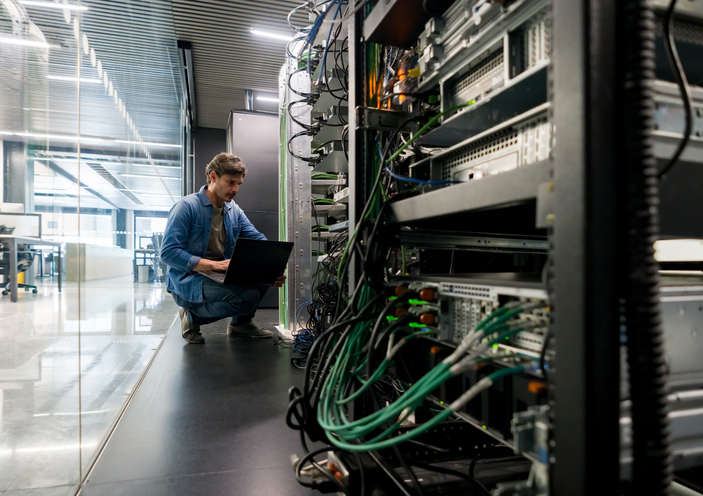Maintenance is one of the most overlooked aspects of choosing an office space. Whether you’re a startup, a remote team, or an expanding company, the way a space handles upkeep affects both your budget and operations. In comparing coworking spaces and traditional office space, one major difference becomes immediately clear: who handles the maintenance – and at what cost?
With coworking spaces, services like cleaning, utilities, and office equipment upkeep are typically managed by the provider. In a traditional office setting, these responsibilities often fall on the tenant. So, how do these two models compare once you factor in all the maintenance-related time, costs, and risks?
How Maintenance Works in a Coworking Model
In most coworking spaces, maintenance is part of the all-inclusive experience. Members pay a flat monthly fee that covers facility services, including janitorial, technical support, IT setup, and office equipment upkeep. Teams working in private offices within coworking centers enjoy the same benefits without the headaches of self-management.
many providers emphasize that “all-inclusive services” are part of their offering. Members enjoy clean meeting rooms, stocked kitchens, fully functional private offices, and tech-ready shared zones – without managing vendors or budgeting for replacements.
This makes coworking especially attractive for growing teams, distributed workforces, and remote-first companies. Many coworking spaces also prioritize community building by maintaining inviting lounges and event areas, offering modern amenities while ensuring that the workspace remains productive and pleasant.
Hidden and Ongoing Maintenance in Traditional Offices
Leasing a traditional office brings a level of control that many businesses value. However, it also comes with considerable upkeep. Responsibilities often include:
Cleaning and janitorial services
HVAC maintenance and filter replacement
Pest control and compliance inspections
Printer maintenance and IT support contracts
Lighting, electrical, and plumbing repair
Equipment purchases and upkeep
Restocking of common areas
In these conventional offices, these responsibilities are not typically bundled. Tenants must handle or outsource each one. While this model gives businesses autonomy, it also increases workload – especially for companies without dedicated facilities staff.
Under many long term leases, tenants are contractually responsible for maintaining everything within their office space, from restrooms to data cabling. These responsibilities continue even during periods of reduced occupancy.
Comparative Breakdown: What Coworking Spaces Offer More Of
Maintenance Category | Coworking Spaces (Monthly) | Traditional Office Space (Monthly) |
|---|---|---|
Utilities | Included | Paid separately, varies with use |
Cleaning | Included | Tenant-provided or billed |
Furniture & Equipment | Provided and maintained | Tenant-owned and managed |
IT & Network Support | Onsite or included | Requires contract or in-house staff |
Meeting and Conference Rooms | Included, shared or bookable | Built-out and tenant-managed |
Unexpected Repairs | Covered by operator | Tenant’s responsibility |
Businesses that switch from conventional offices to coworking can save hundreds monthly per user, especially when maintenance, utilities, and IT are taken into account. Avoiding upfront investment in office equipment alone results in significant cost savings over time.
Time and Cost Savings with Coworking Spaces
Every repair or service issue in a traditional office setup creates a problem that usually dominoes into another. Who will contact the HVAC technician? What’s the cleaning schedule? Has the printer contract expired? The worst part is that you probably will never hear the end of it for as long as you’re the tenant.
These daily interruptions cost time and money – would you really want to spend half your working hours trying to get the AC fixed? In coworking, the operator handles it all. From lightbulb replacement to coordinating with IT vendors, most coworking spaces include a staffed service team that handles all the messy details while you can focus on your projects.
This convenience is critical for small businesses that need to stay lean. With no need to manage facility upkeep or vendor contracts, companies save time and free their team to focus on client work or core growth initiatives.
Coworking Spaces Offer Higher Flexibility
The long term leases of traditional offices often lock tenants into years of responsibility. Even when occupancy dips, tenants continue paying for utilities, cleaning, and vendor contracts they no longer fully use. This inflexibility increases operational risk. Coworking’s bundled structure protects businesses from that by operating on short-term or rolling contracts.
Maintenance in a traditional office space can also be unpredictable. Pipes leak, power strips fail, and supplies run out faster than you can manage. In a leased office, you either solve those problems, or pay someone to. That adds up to your overhead, and can spiral out of control if not managed well.
In a coworking environment, the operator takes full responsibility. Maintenance risk is transferred, giving members peace of mind. This model suits both established businesses and early-stage teams that want predictable, professional environments with minimal exposure to operational breakdowns.
More Scalability Options
Growing businesses often outgrow their spaces. In a traditional office, adding employees can require new desks, more cleaning hours, increased HVAC capacity, or even space reconfiguration.
Each of these adjustments involves more maintenance effort. New vendors may need to be contracted. Permits may be required. Construction may be needed to modify layouts.
Coworking eliminates this complexity. Adding a new employee may be as simple as reserving another desk or upgrading to a larger private office. The operator handles everything else – from cleaning to setup.
Additional Hidden Costs: Equipment Replacement & Depreciation
Office supplies can sometimes have (short) shelf lives – Monitors fail, office furniture get worn, and fire extinguishers can go out of date. In a leased office, you’re responsible for repair or replacement – and depreciation eats into your capital over time. Coworking operators maintain shared assets and update them regularly. Members benefit from fresh, professional setups without the burden of asset management. Some coworking spaces tend to refresh furniture, décor, and tech more frequently than tenants in traditional buildings, ensuring you have a fresh new look to your physical space on a regular basis without paying for upgrades out of pocket.
When Traditional Office Maintenance May Outperform Coworking
Large businesses with in-house facilities teams may manage upkeep efficiently. These teams can negotiate bulk rates and respond quickly to internal needs. In high-security industries, custom maintenance protocols or strict regulatory standards may also necessitate internal control.
In these niche cases, traditional leasing does provide more agency over one’s office security a tad bit more than the standard offerings of coworking spaces.
Do coworking spaces cover maintenance and office services?
Yes. Most coworking spaces include cleaning services, utilities, high-speed internet, office furniture, and shared office equipment maintenance in one monthly fee. This simplifies operations for small businesses, remote workers, and growing teams needing a professional environment without the overhead of a traditional office lease.
What’s the difference between maintenance in coworking and traditional offices?
Coworking environments are managed by the operator, while traditional office spaces require tenants to handle all upkeep, vendor contracts, and infrastructure. A traditional office setup offers complete control but often brings higher costs and less flexibility, especially under long-term commitments.
Are meeting and conference rooms available in coworking spaces?
Yes. Most coworking spaces offer private meeting rooms and bookable conference rooms with modern amenities. These are ideal for collaborating with like-minded professionals, hosting potential clients, or supporting hybrid and remote work models across various industries.
Can coworking support long-term business goals and branding?
Absolutely. Coworking spaces tend to support flexible work while offering private offices, branding options, and scalable space—ideal for established businesses and startups. Many businesses use them to grow in one space while fostering community and reinforcing brand identity.
Why are coworking spaces considered cost-effective?
Coworking provides significant cost savings per square foot by including essential services like office supplies, internet, and security. For companies avoiding long-term leases, coworking is a go-to option that supports well-being, work-life balance, and dynamic business needs.





